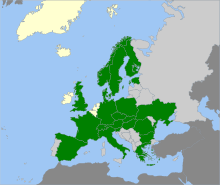Russula firmula
Russula firmula is a type of fungus found mostly in Europe, extending into parts of Asia. It has a dull brown cap, varying from grey to a light purple. The genus Russula is widespread and includes some beautiful and interesting species. They are typically fairly large and have around 750 species worldwide.
| Russula firmula | |
|---|---|
| Scientific classification | |
| Kingdom: | Fungi |
| Division: | Basidiomycota |
| Class: | Agaricomycetes |
| Order: | Russulales |
| Family: | Russulaceae |
| Genus: | Russula |
| Species: | R. firmula |
| Binomial name | |
| Russula firmula Jul. Schäff. | |
 | |
| Distribution of Russula firmula in Europe and Asia | |
Description
Cap
Pilleus convex 3.3-4.2 cm (3-6- (8) cm according to J. Schaeffer, then quickly flattened and even depressed (strongly at the end), frequently irregular and even asymmetrical, without nipple, obtuse margin, curved at first, then straight, sometimes not regular, dull in color, greyish brownish at the beginning (R LI, 15 "', Mouse gray), with the center darker and a little more olive (R XLVI, 17" "k, Chaetura drab), then turning to more or less light purple gray or dark (R LI, 1 "'", Quaker drab), with dark medium (R LI, 1 "'" k at 15 "'" k, dark Quaker drab at 1 ""' k dark Mouse gray), finally evolving with greyish purplish at the edge (R XLV, 9 "" b, light brownish drab), and more or less tinged with olive in the center (R XLVI, 21 ", grayish olive), with darker mottling (R XLVI, 21" "i, deep grayish olive), the base shade being brownish olive (R XL, 17" 'i to 21 "' i, buffy brown citrine drab), it often happens that a marginal purple ring contrasts with the rest from the surface, by drying, the cape of Herbarium specimens become very dark purple, blackish purple; cuticle rather adnate, but separable at the edge, at first dry and of appearance even a little pruinose on the periphery, but rather brilliant and finely chagrined in the center, and becoming by the rain or the age quite clearly shining.[1][2]
Stipe
Stipe short, 2-3,3 x 0,7-1,1 cm (2-5 x 1-1,5 cm according to J. Schaeffer), often not very regular, rather deformed, frequently thickened a little before the base, firm full, then soft from the base where crumbs form, white, wrinkled, mostly above, but sometimes quite rough all along. Thick, firm, white flesh, often tinged with violet-gray under the cuticle at the margin and greenish in the middle, tending to yellow slightly. Strong smell of apple. Pungent flavor. Reaction quite slow to the tincture of Guaiac, reddish dirty FeSO4.
Lamellae
Lamellae initially thin and tight, then spacing clearly (up to 1.2-1.5 mm at the edge of the hat), quite thick, with some furcations, especially near the stipe, but sometimes elsewhere, and may be anastomosed in places, noticeably rounded-sinuated at insertion, obtuse forward, subventrous, wide of 4–6 mm only on our copies (narrow), butter yellow (R XV, 17 'e, lighter than warm buff ) with golden yellow (R III, 17 d, light orange yellow) hues, full ridge, paler, rather coarsely dented interveined at the end. Yellow Spore print
Spores
Spores 8-10.5 x 8-8.25 μm, obovate, verrucous, locally zebra-related stained, warts of unequal size, up to 0.5 μm tall, sometimes aligned or joined by a connective end, distinctly amyloid ; hiliferous appendage 1.25-1.75 x 1.25-1.5 μm; supra-appendicular spot more or less rounded, measuring for example 3 microns, verrucous at the margin, clearly amyloid. Bases 45-52 x 11-12.7 μm. Narrow cystic, 8.5-10- (11.7) x 65-90 μm, cylindraceous, with cylindrical or rounded appendix, well differentiated.
Cuticle
Cuticle with fairly regular hyphae, with some laticiferae, emitting an epicutis of sparsely hairy hair, 2.7-4 μm, obtuse, not acuminate, but however often narrowed up, very rarely capitated, with short terminal article (for example 15 -25 μm long), and branched fairly close to the top, not diverticulate; dermatocystids of medium size, some cylindrical or clavate, non-appendiceal in general, broad of 5, 7-9,2 μm, the others (quite numerous on young subjects) dilated irregularly at the top up to 13-15 μm with constrictions abrupt at certain points.
Habitat
Under Picea excelsa (and maybe Abies mixed), Around Maiche (Doubs).
References
- Romagnesi, Henri (1967). Les russules d'Europe et d'Afrique du Nord. OCLC 808267456.
- "Russula firmula". Mycobank. Retrieved 2019-03-21.